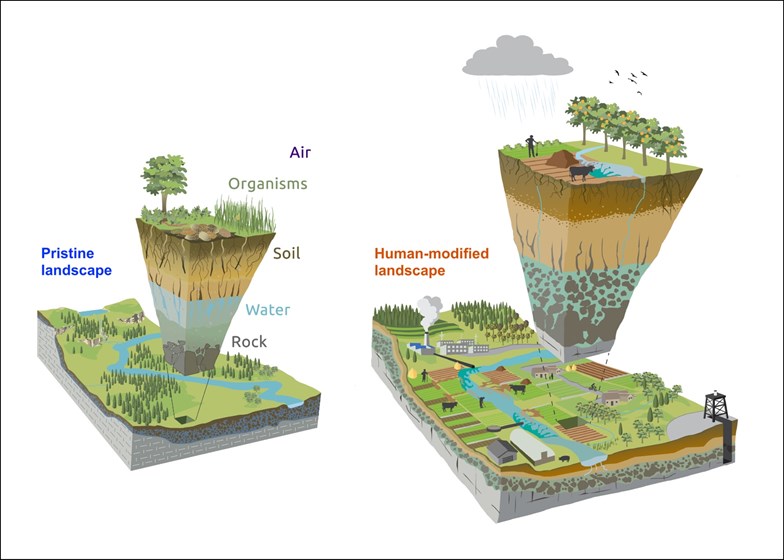New graphic highlights human impact on the Earth’s critical zone

A new drawing shows how human activities can contaminate water, cause soil erosion and pollute the atmosphere
New research published by researchers from the UK and China could be key to tackling the effects of climate change on global food security.
Scientists from SRUC, alongside colleagues in the UK and China, outlined how their experience of working with farmers on land heavily altered by human activity has shown ways in which the 'critical zone' can be protected.
The critical zone is a thin layer on the earth's surface, stretching from water sources below ground to the top of plants and trees, which supports and sustains animal and plant life by regulating the flow of water, greenhouse gases, nutrients and energy.
Access to food, drinking water and clean air depends on a well-functioning critical zone, but decades of human activity have degraded the zone’s condition around the world.
Their insights are summarised in a new graphic, which seeks to visually convey human impact on the Earth’s critical zone more clearly than ever before. The researchers suggest this should replace a widely used, more simplified graphic, introduced in 2007, which focused on the natural processes that shape the critical zone without addressing human impact on landscapes.
The graphic is intended for use by academics across a range of fields for research and teaching purposes, by government agencies that fund science and landscape management, and in fundamental teaching resources such as textbooks. It more clearly shows how human activities like farming, mining, forestry and industry can contaminate water, cause soil erosion and pollute the atmosphere.
Professor Jennifer Dungait, of SRUC and University of Exeter, is joint lead author of the paper.
She said: “Farmers and local communities are at the front line of local land management, with a wealth of knowledge about how to farm productively and sustainably in their home environment. We showed that this knowledge is vital to improving our scientific understanding of critical zone systems.”
SRUC worked with researchers from the universities of Glasgow, Aberdeen, Exeter, Stirling and Queen’s University Belfast in the UK along with colleagues from Peking University, Guizhou Medical University and the Chinese Academy of Sciences in China.
The paper, ‘Achieving sustainable Earth futures in the Anthropocene by including local communities in Critical Zone Science’, is published in Earth’s Future.
The research was supported by funding from the Natural Environmental Research Council, China CZO and MIDST-CZO projects, along with the National Natural Science Foundation of China.
Posted by SRUC on 18/09/2023
